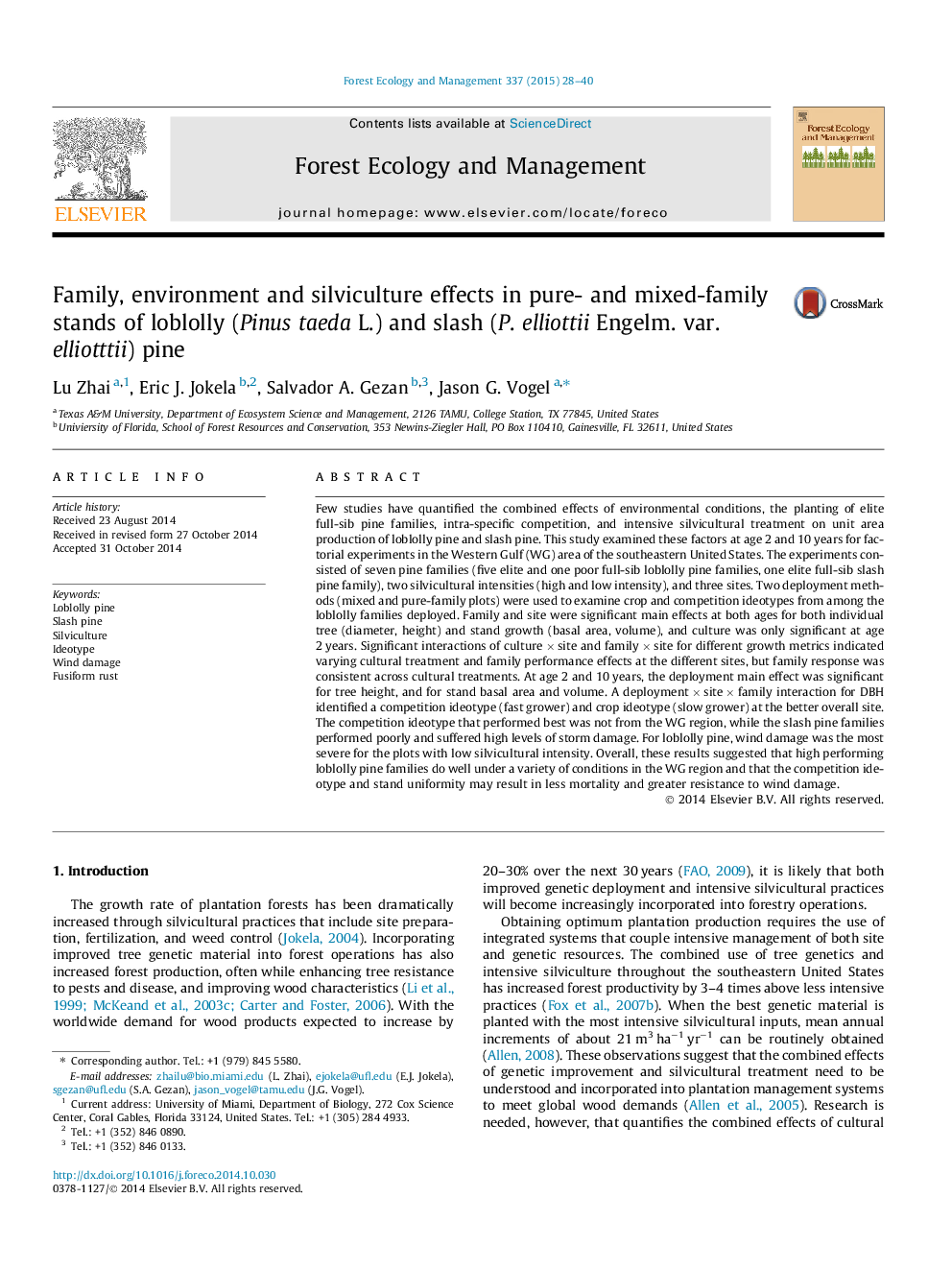| کد مقاله | کد نشریه | سال انتشار | مقاله انگلیسی | نسخه تمام متن |
|---|---|---|---|---|
| 6542857 | 159185 | 2015 | 13 صفحه PDF | دانلود رایگان |
عنوان انگلیسی مقاله ISI
Family, environment and silviculture effects in pure- and mixed-family stands of loblolly (Pinus taeda L.) and slash (P. elliottii Engelm. var. elliotttii) pine
دانلود مقاله + سفارش ترجمه
دانلود مقاله ISI انگلیسی
رایگان برای ایرانیان
کلمات کلیدی
موضوعات مرتبط
علوم زیستی و بیوفناوری
علوم کشاورزی و بیولوژیک
بوم شناسی، تکامل، رفتار و سامانه شناسی
پیش نمایش صفحه اول مقاله

چکیده انگلیسی
Few studies have quantified the combined effects of environmental conditions, the planting of elite full-sib pine families, intra-specific competition, and intensive silvicultural treatment on unit area production of loblolly pine and slash pine. This study examined these factors at age 2 and 10 years for factorial experiments in the Western Gulf (WG) area of the southeastern United States. The experiments consisted of seven pine families (five elite and one poor full-sib loblolly pine families, one elite full-sib slash pine family), two silvicultural intensities (high and low intensity), and three sites. Two deployment methods (mixed and pure-family plots) were used to examine crop and competition ideotypes from among the loblolly families deployed. Family and site were significant main effects at both ages for both individual tree (diameter, height) and stand growth (basal area, volume), and culture was only significant at age 2 years. Significant interactions of culture Ã site and family Ã site for different growth metrics indicated varying cultural treatment and family performance effects at the different sites, but family response was consistent across cultural treatments. At age 2 and 10 years, the deployment main effect was significant for tree height, and for stand basal area and volume. A deployment Ã site Ã family interaction for DBH identified a competition ideotype (fast grower) and crop ideotype (slow grower) at the better overall site. The competition ideotype that performed best was not from the WG region, while the slash pine families performed poorly and suffered high levels of storm damage. For loblolly pine, wind damage was the most severe for the plots with low silvicultural intensity. Overall, these results suggested that high performing loblolly pine families do well under a variety of conditions in the WG region and that the competition ideotype and stand uniformity may result in less mortality and greater resistance to wind damage.
ناشر
Database: Elsevier - ScienceDirect (ساینس دایرکت)
Journal: Forest Ecology and Management - Volume 337, 1 February 2015, Pages 28-40
Journal: Forest Ecology and Management - Volume 337, 1 February 2015, Pages 28-40
نویسندگان
Lu Zhai, Eric J. Jokela, Salvador A. Gezan, Jason G. Vogel,